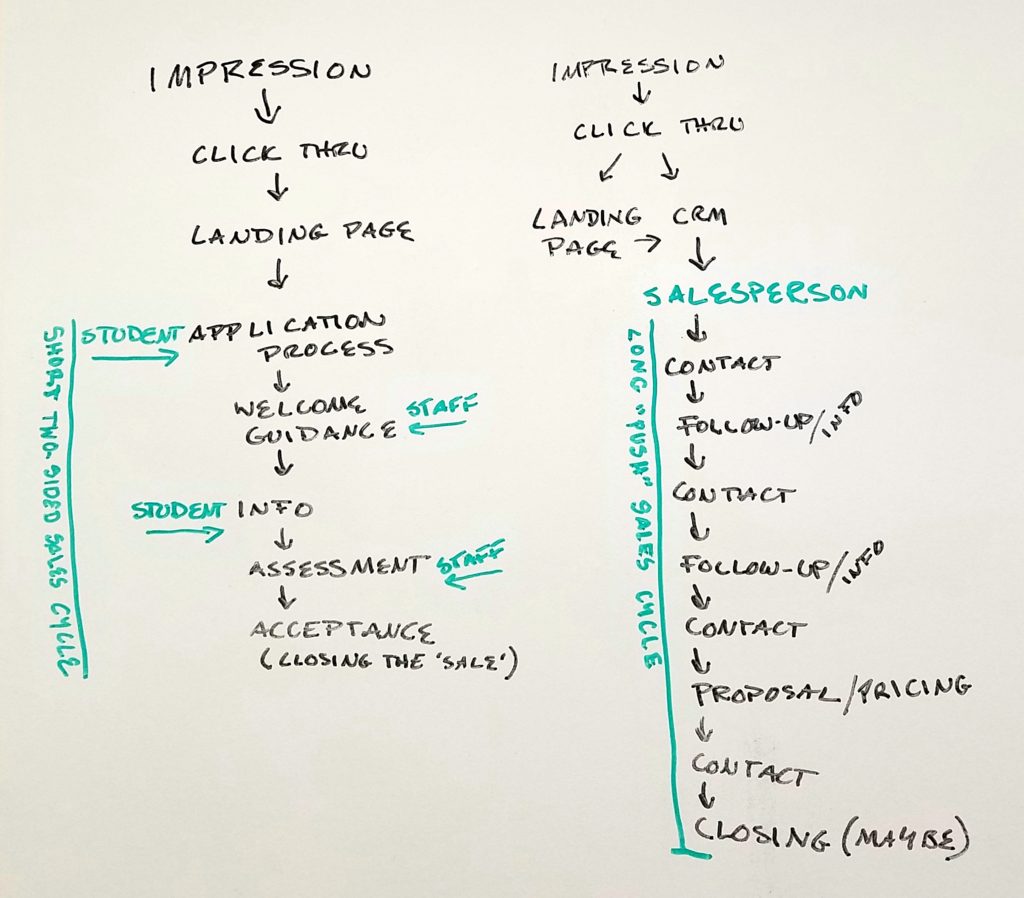We had one of those Rashamon conversations with a prospective client yesterday. We manage digital ad campaigns for a number of clients, so for B2B clients, sooner or later the conversation gets around to LinkedIn. As it happens, we’ve had some very strong results: finding new prospects, raising the quality of applicants, and filling the seats for our educational clients is something that LinkedIn is particularly well suited for.
LinkedIn: Expensive or not?
A few days ago we were curious to find ourselves in a conversation with a prospect who said his results with LinkedIn were “terrible.” Hm.
My mind raced with questions about what might have gone awry. Bad creative? Incorrect campaign set-up or tracking? I pointed out that we had used LinkedIn’s unique ability to target members by interest group, title, years of employment and geographics to hone a very winning strategy for our client. Could the problem have been that the prospect’s target was broader, and therefore LinkedIn was less efficient?
“No,” he answered. “It worked and I agree the leads were high quality. But it was just so expensive. $50 to $60 per lead!”
Ah there’s the rub. We had found CPLs in the same range. Why did our education client feel it was a great success when this financial client did not?
Evaluating the cost of a lead
There are two aspects to evaluating that issue. One is the lifetime value of the sale. For our education client, high tuition makes a high cost per lead a reasonable trade-off. For the prospective client, it was out of balance with the profit to be made either immediately or long-term.
Another reason it was less effective comes down to a difference in the sales process. For education it’s a pretty short trip from interest to application and from application to matriculation. And keep in mind that the student, having chosen the school, is pushing the sale forward, because they want acceptance.
For a different business model such as the prospect we were talking with, the sales process went from lead to sales team and was subject to more variables, including the sales person. In addition, the lifetime value of the customer was unknown. That made LinkedIn “expensive” because there was not a value to benchmark against, and because the lead was only one in a number of steps that could lead to a final sale. Attribution could get lost as humans took over the process.
Takeaway: Match the medium to your sales process and profit model.
As you evaluate media, take the type of sale and the process into consideration. A long sales process may require many influences at different stages to remain top of mind while the customer considers their options. For that you might create a media strategy that spreads the message out over time and over many exposures less expensively. Remarketing may be a good option in that case, because it allows you to track a single person who has shown interest and keep a message in front of them as they come to a decision.
